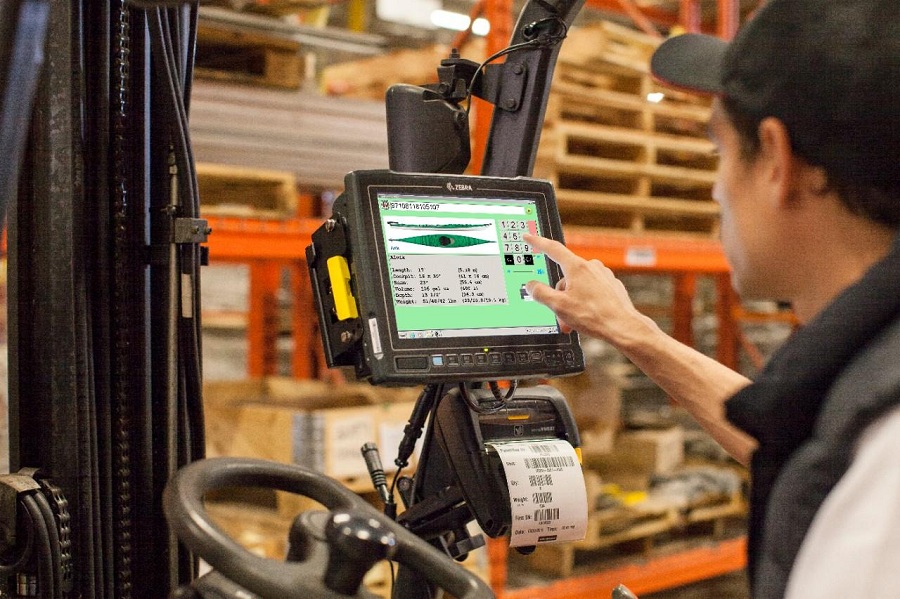Warehouse operations are labor-intensive and often inefficient. Labeling goods is one of those tasks that can eat up hours of labor, but printing at the point of activity with mobile printers can save time, improve labeling accuracy, and boost efficiency for common warehouse processes like receiving, putaway, picking, and shipping.
Below are four ways that mobile printers can benefit the supply chain:
1. Increased Productivity. With mobile printers, employees don’t have to walk back and forth to a central print station.
In a warehouse time-motion study conducted by Zebra Technologies, the company found that workers had to take nine steps to travel fro the pallet to the workstation where the labels were printed. Pallets were labeled in 42 percent less time with a belt-worn mobile printer.
For delivery drivers, field service employees or truck drivers, mobile printers provide the capability to print necessary labels and documents in the field. They don’t have to carry around binders full of unnecessary paperwork, stop at the office, or locate a printer to use while on the road. This saves valuable time, allowing employees to remain focused on their jobs, while keeping them on the road and on schedule.
2. Better Mobility and Flexibility. Many work processes are centered on fixed equipment or work stations — packing occurs in one spot, shipping in another, etc. But what if you could reconfigure some operations so fewer merchandise or pallet moves were necessary?
Workers armed with mobile printers can eliminate unnecessary steps, and even do away with pallet and box moves, by taking the printer to the item, rather than the other way around. Goods can be put away or shipped more quickly. In some cases, it might be possible to reduce the amount of material handling vehicles or equipment being used at a facility by making these changes. This flexibility also makes it easier to reconfigure the warehouse.
Mobile printers like the Zebra QLn family of devices can help improve warehouse efficiency and other supply chain operations by providing point-of-activity printing that is easy to use and reliable. The printers can be centrally managed using the Link-OS environment, and operate on WLAN, Bluetooth, and NFC networks. They are also flexible enough to support Windows, Android, and iOS-based mobile devices.
3. Lower Costs. While there is an initial cost to deploy mobile printers and to purchase supplies and media, the savings generated by mobile printing can create a significant return on investment. Improving productivity has a direct affect on throughput and customer service, as well as labor costs. Avoiding labeling errors can reduce the amount of waste and cost of relabeling, as well as helping to avoid chargebacks and other fines associated with shipping errors or noncompliant labels.
According to data in a Zebra Technologies study, a company that ships 100 orders per day and has an error rate of 2.5 percent could potentially lose $250 per day (based on a $100 resolution cost). A one-percent improvement in the error rate could save $26,000 annually.
4. Improved Accuracy. With fixed-position printers, your staff has to print all of their labels at a central location and then apply them to goods. If the inventory is passing by the printer, then that’s not a problem; if the labeling has to happen at the shelf or in the field, however, there could be labeling errors. Using mobile printers allows employees to identify items to be labeled, input data into their mobile computer, and print the right label at the point of activity. This reduces errors and ensures accurate scanning later on.
Labeling can be decentralized so employees in quality assurance, shipping, picking, and other areas of the facility can print their own labels. This can eliminate bottlenecks at the print stations and further improve accuracy since the most knowledgeable employees can print the labels.
The ROI for mobile printers can be achieved quickly, particularly in facilities that already have existing wireless LANs in place. A relatively small investment in hardware can yield big benefits for your supply chain.




